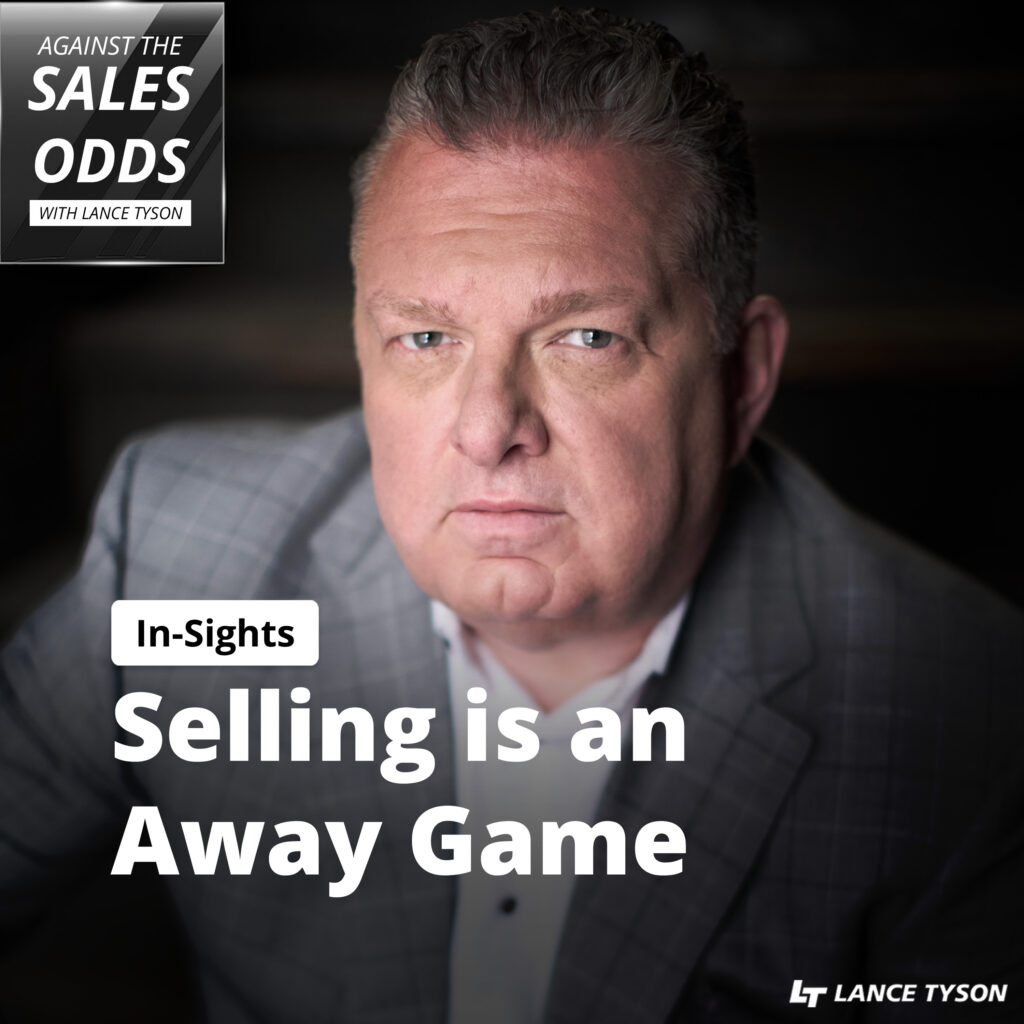Your Prospect is Getting Advice on Their Buying Process That May Not Help You
Four days later I was back in Columbus, having lunch with a member of my team, Lauren. “Hey,” I said to her. “I have to run over to the mall after lunch. Do you have some time to go over there with me, so I don’t have to drop you off at the office first and then come back?”
Lauren nodded. “No, it’s right here. Let’s go. What are you getting?”
“I’m looking at a pair of sneakers.”
“Oh, okay. Cool. What are you thinking?”
I shrugged nonchalantly. “I’m thinking of white Adidas AlphaBounce.”
She looked at me with astonishment. “White? Really? You?”
It was a conspiracy! It had to be!
After some cajoling, she agreed to accompany me and we went to the mall, looking for my soon-to-be new kicks.
As I was looking at the white AlphaBounces, the salesman approached. After introductions and pleasantries (no, I didn’t let him get away with an opening like ‘can I help you’), he started asking questions.
“What size are you?”
“I’m a 9 ½ or 10,” I replied. “Can you bring them both out in white?”
He disappeared into the back. Meanwhile, Lauren picked up a pair of smoke-gray AlphaBounces and said, “You might want to look at these. I’ve just been around you long enough to know you won’t keep them clean.”
So, when the salesman returned, with my self-esteem waning, I said, “All right, let me look at the grey ones, too.”
At this point I was putting on the white ones and asking myself a series of questions: Do I want the white ones more now because two people told me not to get white? Or are they right and I should take their advice? But what if they’re wrong? Should I follow my instincts?
Using Questions in The Sales Process to Direct the Attention of Your Prospect
So, I tried the 10, then I slipped on the 9 ½.
“Well, what do you think?” he asked.
I shook my head. “I don’t know if I should get the 9 ½ or the 10.”
“You should get the 10,” he said, “because when you work out, your feet will swell a little bit and they’ll expand.”
“No, no, no,” I said from behind a grin. “These aren’t for workouts.”
We were connected at that point and he knew exactly what I wanted to achieve. He evaluated my needs based on a few questions. Now came the time for the diagnosis.
He smiled. “Oooooohhhh. They are *those* sneakers. Then you definitely need to get the 9 ½! You just want to be able to slip those bad boys on, right? Not worrying about them slipping off or tying them up tight. Just wear them nice and loose.”
“Right,” I said. I paused for a moment, thinking back on my team’s past suggestions. Then I asked, “What color would you get?”
“Meh… the white ones are gonna get dirty, a lot dirtier than the gray ones, and quicker unless you’re super-careful. I’d get the gray ones. They give you the same effect and they don’t need cleaning as often.”
Sales Process Debrief – What Went Well in This Example
Let’s review what transpired. In this scenario, I may have purchased something in an unsolicited buy. But I still asked myself several sets of questions:
- What’s the current situation?
- What’s the desired situation?
- What should I get?
- What are my options?
- Should I get them? Should I not get them?
And the salesperson took my answers, my questions, and my entire buying process into consideration to come up with a diagnosis for me – the need I had to fill, or the problem I had to solve, or the opportunity I wanted to create.
Here’s what else the salesperson did to move the sale forward. First, he did an excellent job of creating a vivid mental picture of my purchase. He not only described my desired situation, but he also put me in the picture! We’ll talk more about creating enticing presentations later. For now, review the starter manual on creating and delivering professional presentations here.
Second, he resolved a potential objection that was standing in the way of moving the sale forward. The people closest to me were offering buying suggestions based on my personality. And frankly, those suggestions were hindering the sales process. He took that potential objection and turned it into a challenge that everyone faced, removing a whole series of questions that were building in my mind.
We’ll dive a little deeper into the diagnosis process and discover ways to make your ideas their ideas in coming posts.
Remember, the closer you can tailor your sales process to their buying process, the faster you will develop the relationship and reach a commitment from the prospect.
You’ll find more ideas on executing your sales process in Lance Tyson’s book, Selling Is An Away Game: Close Business and Compete in a Complex World available on Amazon. Get your copy t




